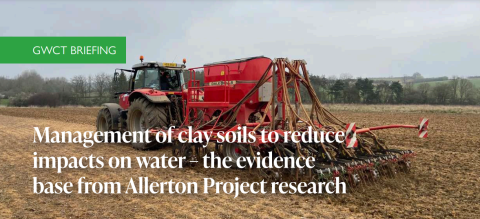BACKGROUND
Agricultural land use can have negative impacts on stream and river water quality because of runoff and loss of soil and nutrients from fields to watercourses. Evidence from the 1,000ha Eye Brook headwater suggests that 300 – 1,000 tonnes of soil enter watercourses from land each year. Much of the phosphorus in water is associated with this soil as phosphorus is bound tightly to soil particles. In a small catchment at the Allerton Project’s farm at Loddington, 95% of the annual phosphorus load in the stream was estimated to be from agricultural land (Jarvie et al., 2010), whereas at the scale of the 3,000ha Water Friendly Farming project headwaters (Stoate, 2023) and the Welland river basin as a whole (Rothwell et al., 2021), the proportion from agricultural land is around 40%.
Reducing the loss of soil, phosphorus and other nutrients from land that is used for food production can be difficult as fine particles associated with clay soils are held in suspension over long distances in runoff, and runoff rates can be high on steep undulating slopes, especially in the upper reaches of river basins. However, Allerton Project research suggests that there are steps that can be taken to reduce runoff and impacts on water quality. The same management practices on agricultural land also help to address the increasing public concern about flood risk by reducing the flow of water from farmland to watercourses and sedimentation of drainage channels.



